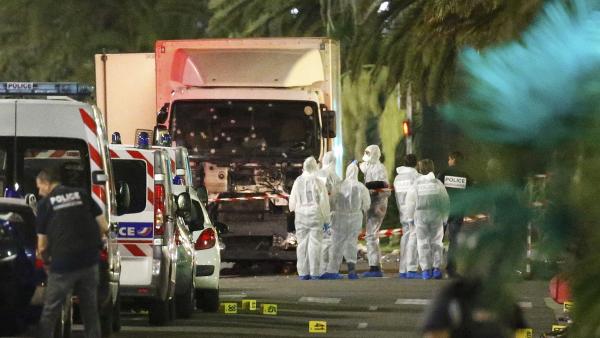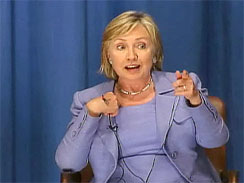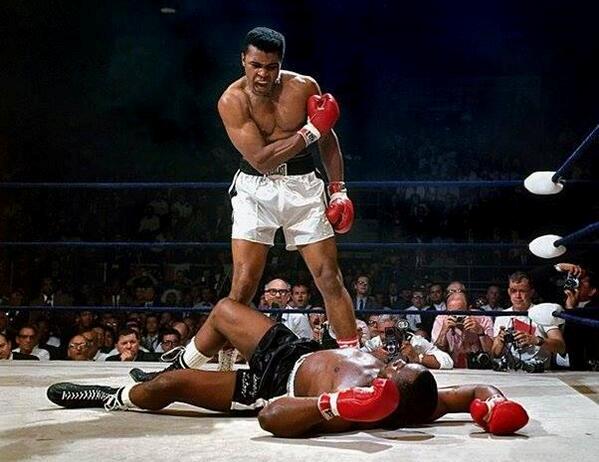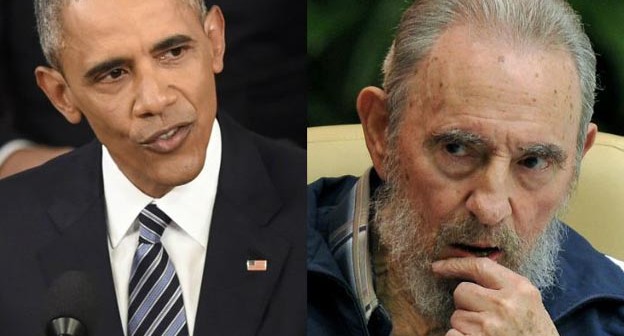Believing he was answering a holy call, Harry Sarfo left his home in the working-class city of Bremen last year and drove for four straight days to reach the territory controlled by the Islamic State in Syria.
He barely had time to settle in before members of the Islamic State’s secret service, wearing masks over their faces, came to inform him and his German friend that they no longer wanted Europeans to come to Syria. Where they were really needed was back home, to help carry out the group’s plan of waging terrorism across the globe.
“He was speaking openly about the situation, saying that they have loads of people living in European countries and waiting for commands to attack the European people,” Mr. Sarfo recounted on Monday, in an interview with The New York Times conducted in English inside the maximum-security prison near Bremen. “And that was before the Brussels attacks, before the Paris attacks.”
The operatives belonged to an intelligence unit of the Islamic State known in Arabic as the Emni, which has become a combination of an internal police force and an external operations branch, dedicated to exporting terror abroad, according to thousands of pages of French, Belgian, German and Austrian intelligence and interrogation documents obtained by The Times.
The Islamic State’s attacks in Paris on Nov. 13 brought global attention to the group’s external terrorism network, which began sending fighters abroad two years ago. Now, Mr. Sarfo’s account, along with those of other captured recruits, has further pulled back the curtain on the group’s machinery for projecting violence beyond its borders.
Reinforcing the idea that the Emni is a core part of the Islamic State’s operations, the interviews and documents indicate that the unit has carte blanche to recruit and reroute operatives from all parts of the organization — from new arrivals to seasoned battlefield fighters, and from the group’s special forces and its elite commando units. Taken together, the interrogation records show that operatives are selected by nationality and grouped by language into small, discrete units whose members sometimes only meet one another on the eve of their departure abroad.
Vetting Recruits
The first port of call for new arrivals to the Islamic State is a network of dormitories in Syria, just across the border from Turkey. There, recruits are interviewed and inventoried.
Mr. Sarfo was fingerprinted, and a doctor came to draw a blood sample and perform a physical examination. A man with a laptop conducted an intake interview. “He was asking normal questions like: ‘What’s your name? What’s your second name? Who’s your mom? Where’s your mom originally from? What did you study? What degree do you have? What’s your ambition? What do you want to become?’” Mr. Sarfo said.
Since the rise of the Islamic State over two years ago, intelligence agencies have been collecting nuggets on the Emni. Originally, the unit was tasked with policing the Islamic State’s members, including conducting interrogations and ferreting out spies, according to interrogation records and analysts. But French members arrested in 2014 and 2015 explained that the Emni had taken on a new portfolio: projecting terror abroad.
Mr. Moreau explained that he had run a restaurant in Raqqa, Syria, the de facto capital of the group’s territory, where he had served meals to key members of the Emni — including Abdelhamid Abaaoud, the on-the-ground commander of the Paris attacks, who was killed in a standoff with the police days later.
Records from French, Austrian and Belgian intelligence agencies show that at least 28 operatives recruited by the Emni succeeded in deploying to countries outside of the Islamic State’s core territory, mounting both successful attacks and plots that were foiled. Officials say that dozens of other operatives have slipped through and formed sleeper cells.
In his own interactions with the Emni, Mr. Sarfo realized that they were preparing a global portfolio of terrorists and looking to fill holes in their international network, he said.
He described what he had been told about the group’s work to build an infrastructure in Bangladesh. There, a siege by a team of Islamic State gunmen left at least 20 hostages dead at a cafe last month, almost all of them foreigners.
Mr. Sarfo said that for Asian recruits, the group was looking specifically for militants who had emerged from Al Qaeda’s network in the region. “People especially from Bangladesh, Malaysia and Indonesia — they have people who used to work for Al Qaeda, and once they joined the Islamic State, they are asking them questions about their experiences and if they have contacts,” he said.
In his briefings with the German authorities, and again in the interview this week, Mr. Sarfo raised the possibility that some of the recent attackers in Europe who pledged allegiance to the Islamic State’s leader during their assaults might have a more direct link to the group than officials believe.
Mr. Sarfo explained that the Emni keeps many of its operatives underground in Europe. They act as nodes that can remotely activate potential suicide attackers who have been drawn in by propaganda. Linking them are what Mr. Sarfo called “clean men,” new converts to Islam with no established ties to radical groups.
“These people are not in direct contact with these guys who are doing the attacks, because they know if these people start talking, they will get caught,” he said of the underground operatives.
“They mostly use people who are new Muslims, who are converts,” he said. Those “clean” converts “get in contact with the people, and they give them the message.” And in the case of some videotaped pledges of allegiance, the go-between can then send the video on to the handler in Europe, who uploads it for use by the Islamic State’s propaganda channels.
The intelligence documents and Mr. Sarfo agree that the Islamic State has made the most of its recruits’ nationalities by sending them back to plot attacks at home. Yet one important region where the Emni is not thought to have succeeded in sending trained attackers is North America, Mr. Sarfo said, recalling what the members of the branch told him.
Though dozens of Americans have become members of the Islamic State, and some have been recruited into the external operations wing, “they know it’s hard for them to get Americans into America” once they have traveled to Syria, he said.
“For America and Canada, it’s much easier for them to get them over the social network, because they say the Americans are dumb — they have open gun policies,” he said. “They say we can radicalize them easily, and if they have no prior record, they can buy guns, so we don’t need to have no contact man who has to provide guns for them.”
Based on the accounts of operatives arrested so far, the Emni has become the crucial cog in the group’s terrorism machinery, and its trainees led the Paris attacks and built the suitcase bombs used in a Brussels airport terminal and subway station. Investigation records show that its foot soldiers have also been sent to Austria, Germany, Spain, Lebanon, Tunisia, Bangladesh, Indonesia and Malaysia.
With European officials stretched by a string of assaults by seemingly unconnected attackers who pledged allegiance to the Islamic State, also known as ISIS or ISIL, Mr. Sarfo suggested that there may be more of a link than the authorities yet know. He said he was told that undercover operatives in Europe used new converts as go-betweens, or “clean men,” who help link up people interested in carrying out attacks with operatives who can pass on instructions on everything from how to make a suicide vest to how to credit their violence to the Islamic State.
The group has sent “hundreds of operatives” back to the European Union, with “hundreds more in Turkey alone,” according to a senior United States intelligence official and a senior American defense official, both of whom spoke on the condition of anonymity to discuss intelligence.
Mr. Sarfo, who was recently moved out of solitary confinement at his German prison because he is no longer considered violent, agrees with that assessment. “Many of them have returned,” he said. “Hundreds, definitely.”
Training Days
Since late 2014, the Islamic State has instructed foreigners joining the group to make their trip look like a holiday in southern Turkey, including booking a return flight and paying for an all-inclusive vacation at a beach resort, from which smugglers arrange their transport into Syria, according to intelligence documents and Mr. Sarfo’s account.
That cover story creates pressure to keep things moving quickly during the recruits’ training in Syria, and most get a bare minimum — just a few days of basic weapons practice, in some instances.
“When they go back to France or in Germany, they can say, ‘I was only on holidays in Turkey,’” Mr. Sarfo said. “The longer they stay in the Islamic State, the more suspicious the secret service in the West gets, and that’s why they try to do the training as quickly as possible.”
Mr. Sarfo’s facility in both German and English — he studied construction at Newham College in East London — made him attractive as a potential attacker. Though the Emni approached him several times to ask him to return to Germany, he demurred, he said.
Eventually, Mr. Sarfo, perhaps because of his burly build — 6-foot-1 and around 286 pounds when he arrived in Syria, though he has lost weight since then — was drafted into the Islamic State’s quwat qhas, Arabic for special forces.
The unit only admitted single men who agreed not to marry during the duration of their training. In addition to providing the offensive force to infiltrate cities during battles, it was one of several elite units that became recruiting pools for the external operations branch, Mr. Sarfo said.
Along with his German friend, he was driven to the desert outside Raqqa.
“They dropped us off in the middle of nowhere and told us, ‘We are here,’” he said, according to the transcript of one of his interrogation sessions. “So we’re standing in the desert and thought to ourselves, ‘What’s going on?’” When the two Germans looked more closely, they realized there were cavelike dwellings around them. Everything above ground was painted with mud so as to be invisible to drones.
“Showering was prohibited. Eating was prohibited, too, unless they gave it to you,” Mr. Sarfo said, adding that he had shared a cave with five or six others. Even drinking water was harshly rationed. “Each dwelling received two cups of water a day, put on the doorstep,” he said. “And the purpose of this was to test us, see who really wants it, who’s firm.”
The grueling training began: hours of running, jumping, push-ups, parallel bars, crawling. The recruits began fainting.
By the second week, they were each given a Kalashnikov assault rifle and told to sleep with it between their legs until it became “like a third arm,” he said, according to his interrogation transcript.
The punishment for failing to keep up was harsh. “There was one boy who refused to get up, because he was just too exhausted,” Mr. Sarfo told the authorities. “So they tied him to a pole with his legs and his arms and left him there.”
He learned that the special forces program involved 10 levels of training. After he graduated to Level 2, he was moved to an island on a river in Tabqa, Syria. The recruits’ sleeping spots now consisted of holes in the ground, covered by sticks and twigs. They practiced swimming, scuba diving and navigating by the stars.
Throughout his training, Mr. Sarfo rubbed shoulders with an international cadre of recruits. When he first arrived at the desert campus, he ran laps alongside Moroccans, Egyptians, at least one Indonesian, a Canadian and a Belgian. And out on the island, he learned of similar special units, including one called Jaysh al-Khalifa, or the Army of the Caliphate.
A 12-page criminal complaint indicates that the Islamic State tried to recruit at least one American into that unit, but he declined to enroll.
The man, Mohamad Jamal Khweis, a 26-year-old from Alexandria, Va., traveled to Syria in December, only to be captured by Kurdish troops in Iraq in March. In his debriefing with the F.B.I., he explained that early on, he was approached by members of the unit. “During his stay at this safe house, representatives from Jaysh Khalifa, a group described by the defendant as an ‘offensive group,’ visited the new ISIL recruits,” the complaint says. “The representatives explained that their group was responsible for accepting volunteers from foreign countries who would be trained and sent back to their countries to conduct operations and execute attacks on behalf of ISIL. The group’s requirements, among other things, were that recruits had to be single, would train in remote locations, must be free of any injuries and had to stay reclusive when returning to their home countries.”
The Big Man
As he progressed through the special forces training, Mr. Sarfo became closer with the emir of the camp, a Moroccan, who began to divulge details about how the Islamic State’s external operations effort was structured, he said. Mr. Sarfo learned that there was one outsize figure behind the group’s strategies and ambitions. “The big man behind everything is Abu Muhammad al-Adnani,” he said.
“He is the head of the Emni, and he is the head of the special forces as well,” Mr. Sarfo added. “Everything goes back to him.”
Born in the town of Binnish in northern Syria, Mr. Adnani is said to be 39, and is the subject of a $5 million bounty from the State Department’s Rewards for Justice program. But details about his life remain a mystery. Only one known photograph of him exists, and it was taken years ago.
Mr. Sarfo explained that when recruits to the special forces finished all 10 levels of training, they were blindfolded and driven to meet Mr. Adnani, where they pledged allegiance to him directly. Mr. Sarfo was told that the blindfolds stayed on the whole time, so that even Mr. Adnani’s best-trained fighters never know what he looks like.
To the world, Mr. Adnani is better known as the official spokesman of the Islamic State, and the man who put out a global call this year for Muslims to attack unbelievers wherever they were, however they could.
“Adnani is much more than just the mouthpiece of this group,” said Thomas Joscelyn, a senior fellow at the Foundation for Defense of Democracies in Washington who tracks the group’s leadership. “He is heavily involved in external operations. He is sort of the administrative ‘yea’ or ‘nay’ at the top of the pyramid,” who signs off on attack plans, the details of which are handled by his subordinates.
During his time in Syria, Mr. Sarfo was contacted by other German fighters who wanted him to be an actor in a propaganda film aimed at German speakers. They drove to Palmyra, and Mr. Sarfo was told to hold the group’s black flag and to walk again and again in front of the camera as they filmed repeated takes. Syrian captives were forced to kneel, and the other German fighters shot them, showing an interest only in the cinematic effect.
One turned to Mr. Sarfo immediately after killing a victim and asked: “How did I look like? Did I look good, the way I executed?”
Mr. Sarfo said he had learned that videos like the one he acted in were vetted by Mr. Adnani himself in a monthly meeting of senior operatives.
“There’s a vetting procedure,” he said. “Once a month they have a shura — which is a sitting, a meeting — where all the videos and everything that is important, they start speaking about it. And Abu Muhammad al-Adnani is the head of the shura.”
Mr. Sarfo said he had started doubting his allegiance to ISIS during his training, after seeing how cruelly they treated those who could not keep up. Making the propaganda video provided his final disillusionment when he saw how many times they recorded each scene in the five-minute film. Back in Germany, when he had been inspired by similar videos, he had always assumed they were real, not staged.
He began plotting his escape, which took weeks and involved sprinting and crawling in a field of mud before crossing into Turkey. He was arrested at Bremen Airport, where he landed on July 20, 2015, and he voluntarily confessed. He is now serving a three-year term on terrorism charges.
The Lieutenants
Among the Islamic State’s innovations is the role of foreigners, especially Europeans, in the planning of attacks.
Mr. Sarfo’s account agrees with investigation documents and the assessments of terrorism experts, who say that French and Belgian citizens like Mr. Abaaoud are more than just operatives and have been given managing roles.
“It’s a creative and interesting operational road map, to be able to lean on someone like Abaaoud, who has his own network abroad,” said Jean-Charles Brisard, chairman of the Center for the Analysis of Terrorism in Paris. “They gave him the autonomy regarding tactics and strategy, even if the operation as a whole still needs a green light from the Islamic State’s leadership.”
Looking at the current leaders of the Emni, investigators have homed in on two in particular. They go by the aliases Abu Souleymane, a French citizen, and Abu Ahmad, described as Syrian. Both are considered top lieutenants of Mr. Adnani, according to the senior American defense official and senior intelligence official.
The two men play a direct role in identifying fighters to be sent overseas, in choosing targets and in organizing logistics for operatives, including paying for smugglers to get them to Europe and, in at least one case, sending Western Union transfers, according to European intelligence documents.
A glimpse into the possible role of Abu Souleymane came from one of the hostages held by suicide bombers inside the Bataclan concert hall in Paris in November.
After gunning down dozens of concertgoers, two of the suicide bombers retreated into a hallway with a group of hostages, forcing them to sit against the windows as human shields, said the hostage, David Fritz-Goeppinger, 24. In the two-and-a-half-hour standoff that ensued, Mr. Fritz heard one of the bombers ask the other, “Should we call Souleymane?”
The second operative appeared annoyed that the first had asked the question in French, and ordered him to switch to Arabic.
“I immediately understood that, yes, this was the individual, maybe not the individual who had organized the attack, but who held a place in the hierarchy above them,” Mr. Fritz said in a telephone interview. His testimony is also included in a detailed, 51-page report by France’s antiterrorism police. “They were absolutely, like soldiers,” awaiting orders, he said.
Souleymane, whose full nom de guerre is Abu Souleymane al-Faransi, or Abu Souleymane the Frenchman, is believed to be a French national in his 30s who is of either Moroccan or Tunisian ancestry, according to Ludovico Carlino, a senior analyst with IHS Conflict Monitor in London. Mr. Carlino says he believes that Souleymane was promoted to be the top terrorism planner for Europe after Mr. Abaaoud’s death.
A snapshot of the other senior leader, Abu Ahmad, appears in the account of a man who investigators have concluded was supposed to be part of the team of Paris attackers: an Algerian named Adel Haddadi. Mr. Haddadi said he and another member of the team, a former Lashkar-e-Taiba member from Pakistan named Muhammad Usman, were separated from two other attackers after they reached Greece by boat.
Mr. Haddadi, 28, and Mr. Usman, 22, were eventually arrested in a migrant camp in Salzburg, Austria. The two men sent alongside them became the first suicide bombers to detonate their vests outside the Stade de France during the November attacks.
After arriving in Syria and being routed to the international dormitory there in February 2015, Mr. Haddadi worked as a cook in Raqqa for months before a member of the Emni came to see him, according to French and Austrian investigation documents.
“One day, a Syrian came into the kitchen to see me and said that someone called Abu Ahmad wanted to see me,” Mr. Haddadi was quoted as saying in the Austrian record of his interrogation. He was driven to a five-story building, where another Syrian holding a walkie talkie radioed Abu Ahmad. They waited for hours before the Syrian got orders to drive the recruit to the next location. In the street, a Saudi man wearing all white was waiting, and asked Mr. Haddadi to go on a walk.
After 300 yards, they reached an empty apartment building and sat down. “I was scared, I wanted to leave, but he talked the whole time,” Mr. Haddadi told the authorities.
“He said only positive things about me, that Daesh trusted me and that I now needed to prove myself worthy of that trust. He said that Daesh was going to send me to France,” Mr. Haddadi added, using the Arabic acronym for the Islamic State. “The details, he said, I would get them once I arrived in France.”
Sometime after that, Abu Ahmad arrived. Mr. Haddadi described him as a Syrian man between 38 and 42 years old, slim with a long, black beard, and dressed all in black. He was, Mr. Haddadi said, “the giver of orders.”
Abu Ahmad brought Mr. Haddadi together with three other potential attackers, with the last man, Mr. Usman, being introduced just a day before they all set out for Europe. Mr. Haddadi and two of the other men were native Arabic speakers, and Mr. Usman spoke enough Arabic to communicate with them, the interrogation documents said.
The day of their departure, Abu Ahmad came and gave them his Turkish cellphone number, instructing them to store it in their phone as “FF,” to avoid registering a name. He gave Mr. Haddadi $2,000 in $100 bills, and they were driven to the Turkish border. A man met them in Turkey to take their photographs, and returned with Syrian passports. Another smuggler arranged their Oct. 3 boat trip to Leros, Greece.
All of these logistical steps, as well as Western Union money transfers, were organized by Abu Ahmad, one of the senior lieutenants running the Islamic State’s efforts to export terror. Until his arrest in December, Mr. Haddadi remained in touch with Abu Ahmad through messages on Telegram and via text messages to his Turkish number, according to the investigation record.
Abu Ahmad’s Turkish number was found somewhere else, too: written on a slip of paper in the pants pocket of the severed leg of one of the suicide bombers at the Stade de France.




 Les enquêteurs analysent le camion de 19 tonnes qui a foncée sur la foule présente sur la promenade des Anglais, le 14 juillet 2016. REUTERS/Eric Gaillard
Les enquêteurs analysent le camion de 19 tonnes qui a foncée sur la foule présente sur la promenade des Anglais, le 14 juillet 2016. REUTERS/Eric Gaillard























